Carnaval: most would associate this word with Brazil and the incredible costumes and parades that can be seen on TV every year. Masks, sequins, dancers, headdresses, music, and absolute chaos. Most locals in Barcelona know that Sitges dominates the Carnaval playing field usually, and it is just a bus or a train ride away. This year, Barcelona will celebrate the
Most locals in Barcelona know that Sitges dominates the Carnaval playing field usually, and it is just a bus or a train ride away. This year, Barcelona will celebrate the incredible festival of Carnaval between the 4th until the 10th of February, but the true madness takes place in Sitges, this Sunday, February 7th.
Table of Contents
Brief History
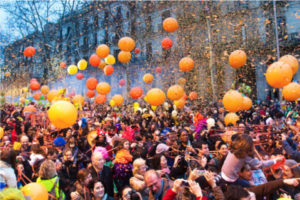


This year, there will be the return of the “Reina de Belluga” who is presiding the commencement of Carnaval this year. This queen is in fact a king in drag, representing a character from the XVIII century.
Initially, the King and Queen of Belluga were created in mockery of the monarchy and the kings of the time. The first celebration of Carnaval in Catalonia took place in 1633 on the 31 of January, with a parade that mocked the royals, criticizing the power of the monarchy and the Catholic Cardinals, and to make a parody of the corruption that was occurring at the time. If you see the words, “Molinos” or “Molinets“, they are little pinwheels, that the “king and queen” used to stuff in their little makeshift “crowns”, and you should see them throughout the city.
Related article: Barcelona’s Festival Activities Centers
Week Outline
The festival starts this Thursday, known as Fat Thursday, celebrating the arrival of Carnaval and the Carnaval King. The King will arrive to the neighborhood of “La Ribera” at Plaça de Joan Capri around 18:00 until 19:30 and will end at the Mercat del Born in the neighborhood of “El Born”.
You will find the reception of the king and simultaneous commencement of the Carnaval Barcelones at the following locations, after the initial parade: Plaça de San Cugat, carer Carders, placeta d’en Marcús, carrer dels Montcada, Passeig del Born i Mercat del Born.
At Plaza Comercial you will find Rodanxó y la Rodanxona which are two historical giants in this Catalan tradition. After the king arrives, there will be a fireworks show in the Plaza Comercial with actual recovered fireworks from the 17th and 18th century called the “Fuegos de Carnaval”.
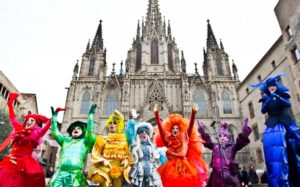


On Saturday You will also be able to find a spectacular parade in each neighborhood of the city, called “Ruas”. Here you can find information about the locations, times and dates of the ruas throughout Barcelona and a list of activities and places where families can enjoy dressing up in costume and joining in family-friendly festivities.
On Sunday, the event called the “Taronjada” will take place. This event is what distinguishes this Carnaval from the rest and truly makes it special to Barcelona. The Taronjada is made up of four parts, the first of which starting at 4:30 pm in Plaça Comercial. The Taronjada consists of a small battle, and essentially a confetti fight complete with balloons. In the initial “battle” in the 14th century Barcelona Carnaval, there were actual oranges thrown! This incredible show is truly a spectacular event, where people gather in the plaza wearing masks and are sprayed by orange confetti (hence taronja, catalan for orange). At at the end of the Taronjada, there is music and a masquerade dance.
Sitges
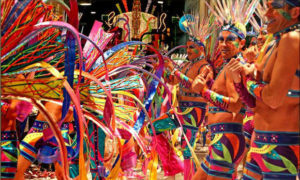


The “Debauchery Parade” is the night of all nights in Sitges, starting and ending at Cap de la Vila.
You can get to Sitges y taking the train at Estacion de Sants. The last train usually leaves at 12:06 am. After that, the earliest train leaves 5:45 am. Double check the times and take a picture of the schedule before you leave the station so you don’t forget.
Stay safe and be smart! Happy partying!









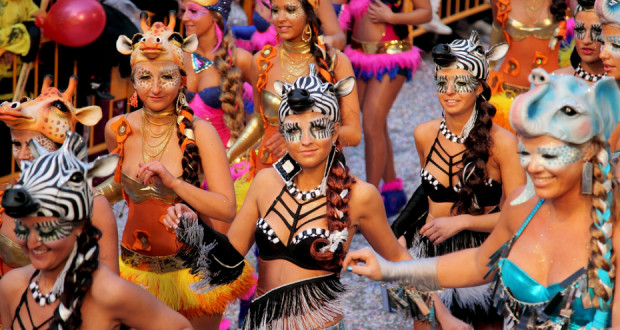

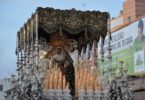





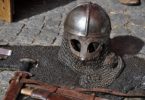
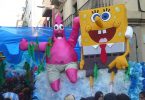
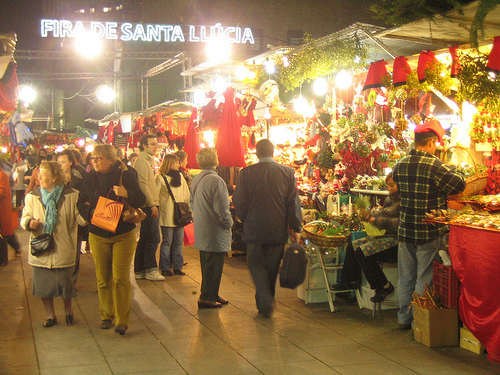


Leave a Comment